Prehistory
It seems well
established that before the appearance of man on earth there were
no bicycles, as demonstrated by the presence in that age of the
dinosaurs: actually, since the
extinction of the great reptiles is mainly due to the running
downs by bicycles, it's obvious that the presence of the former
rules out the latters. It seems on the other hand that the first
Hominidae knew the bicycle, although they fell victim of frequent
tumbles for their habit to ring the bell with their feet. It also
seems that the typical supraorbital ridge prominence of Neandertal
man had a traumatic origin, due to the frequent impacts caused
by the tumbles face down from the bicycle.


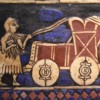

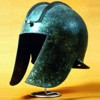
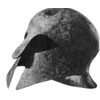
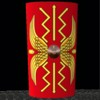
The
ancient world
Some attribute
to the Sumerians the invention of the wheel,
but according to recent researches the invention of the bicycle
would have happened before, and the wheel would have been invented
later as a velocipede's accessory, in order to improve its efficiency
and comfort. It seems that the more frequent use of the vehicle
by the Babylonians was to propitiate the arrival of rain,
organizing Sunday trips for cycle tourists.
The riskiness of bicycle circulation in the ancient world is testified
by the great number of helmets found, many
of which were damaged, while the
manufactures commonly known as shields
actually were rudimentary windshields, being scarcely functional
because they were not transparent.
The first models of bicycle had probably two places, with the
two passengers pedaling in opposite direction; later, in the Roman
Age, it was probably resolvhistoria
de la bicicleta - Andrea Gaddinied to turn the two passengers
in the same sense, with the invention of the tandem
(the name means: "at long last"), so dear to
Cicero, who in one of his orations
described the patience needed to put the bicycle chain (in Latin
"catilina") back in its place, once it comes
out from the sprocket wheel ("Quousque tandem abutere,
Catilina, patientia nostra?").
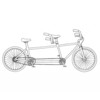
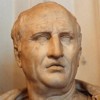





Middle
Ages
According to the
tradition Leonardo da Vinci left a
drawing representing a bicycle,
but we should discredit this legend: in reality Leonardo invented
the motorcycle, but he was forced to give up using it because
it was impossible to find a filling station open in the Duchy
of Milan, where he dwelt. This difficulty drove him to remove
the engine and replace it with a pedal propulsion system. It seems
that the genius of Vinci also invented the technique to place
the left foot on the left pedal and the right foot on the right
pedal, rather than the other way around, and this improved very
much the push thrust efficiency and the cyclist's comfort.
We also owe to Leonardo the invention of the first bicycle lamps,
consisting of small burning fireplaces, installed on the mudguards,
that gave however some safety problem (the bicycles were made
of wood), but also feeding problems, mostly in rainy or windy
days.
In the sixteenth century the emperor Charles
V, who was a cycling fan, was anyway tired of his long and
exhausting climbs on the Dutch Alps,
gave orders to level them to get a wide plain, nowadays known
as The Netherlands.
An important technical improvement was the invention of the saddle,
which was useful mostly for the bicycle couriers, accustomed to
jumping on the byke and starting in a rush. At first they used
horse saddles, equipped with stirrups,
which made the push thrust hard, moreover the first cyclists were
fitted with spurs, that they used to
spur the bicycle on the slopes, causing frequent punctures.
Later on the saddles underwent a progressive size reduction, till
they reached the current size, not recommending
again the habit to jump on the saddle in an exceedingly abrupt
way.

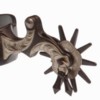

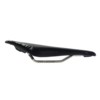
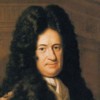
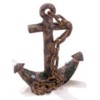

The
modern era
Many great scientists
and philosophers contributed to the improvement of the bicycle:
between them Gottfried Wilhelm von Leibniz,
who invented the first antitheft device, very effective, but not
particularly handy, since it weighed 43 kgs (95 lbs) and it was
built together with the bicycle itself; the same scientist invented
the first braking device, composed by a lead anchor
weighing about 60 kgs (132 lbs).
Benjamin Franklin invented the lightning
conductor as a bicycle accessory, thinking it was useful in order
to supply electric power for the lamps, but after some fatal accident
occurred to the testers, he preferred to conceive the device as
an autonomous invention. Even Søren
Kierkegaard was keen on cycling and wrote his work "Either/Or"
being urged by the indecision between purchasing either a classic
bicycle or a mountain byke.



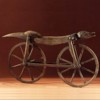



The French physicist Sadi Carnot invented a peculiar type
of bicycle (the Carnot cycle) running on a gas produced by the
cyclist himself (perfect gas), after the consumption of legumes.
Also Joseph-Ignace Guillotin designed
a model of bicycle, the célérifère,
lacking in brakes and steering, that in reality wasn't a means
of transport, but rather an instrument to administer death penalty,
as an alternative to the guillotine, when used on downhill roads
with hairpin bends.
In 1899 Leopold von Sacher-Masoch invented
a simple model of dérailleur, bearing few cogs on the chain
ring and many cogs on the cogset, allowing to make the push thrust
much harder, but with a lower speed. Sacher-Masoch also took up
again the ancient model of bycicle without saddle. Later on the
dérailleur was improved, engineering the model now in use,
which made the push thrust more efficient, but wasn't appreciated
by Sacher-Masoch.
In the twentieth-century the figure of the biochemist Hans
Adolf Krebs stands out: he studied the cellular respiration
process, which is essential for the physical effort needed to
pedal, and therefore named "Krebs cycle".
In the future the bicycle will be surely the kernel of many important
technological innovations, as the air conditioning, the cabriolet
body, the windscreen wiper, the remote central locking of doors
and the Little Trees, as evidence
of the age-long incitement action promoted by the velocipede on
technology.

 page
created: December
18th 2011 and last updated:
December
21st 2011
page
created: December
18th 2011 and last updated:
December
21st 2011